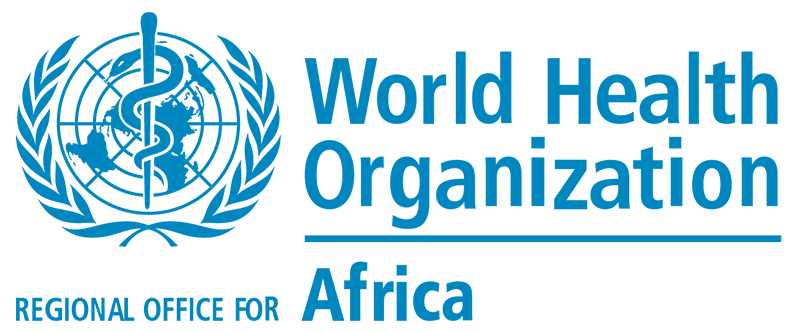Beware the Silent Killer: Marburg Virus Disease on the Rise
In the heart of Africa, a deadly disease has been lurking in the shadows, claiming lives and spreading fear among the population. Meet Marburg virus disease, a hemorrhagic fever that has been quietly wreaking havoc in the continent for decades. With its high mortality rate and lack of awareness, Marburg virus disease is often referred to as the “silent killer”.

Understanding Marburg Virus Disease
Marburg virus disease (MVD), also known as Marburg haemorrhagic fever, is a severe and often fatal illness in humans. The average MVD case fatality rate is around 50%, but it can be much lower with good and early patient care. There are currently no approved vaccines or antiviral treatments for MVD, but a range of vaccines and drug therapies are under development.
What is Marburg Virus Disease?
Marburg virus disease is a viral hemorrhagic fever caused by the Marburg virus, which belongs to the Filoviridae family. The disease has a high mortality rate, with some outbreaks reporting a case fatality ratio of up to 88%. The Marburg virus is transmitted to people from fruit bats and spreads among humans through direct contact with the bodily fluids of infected people, surfaces, and materials.
The disease was first detected in 1967 after two simultaneous outbreaks in Marburg and Frankfurt in Germany, and in Belgrade, Serbia. These outbreaks were associated with laboratory work using African green monkeys (Cercopithecus aethiops) imported from Uganda. The Marburg virus is similar to the Ebola virus, and both diseases are rare but have the capacity to cause outbreaks with high fatality rates.
History of the Disease: First Outbreak and Spread
The first outbreak of Marburg virus disease occurred in 1967, and since then, there have been sporadic cases and outbreaks reported in several countries in Africa, including Angola, the Democratic Republic of the Congo, Ghana, Guinea, Kenya, Rwanda, South Africa, and Uganda. In March 2023, Tanzania reported its first outbreak of Marburg virus disease, and in January 2025, the country declared another outbreak in the northwestern Kagera region.
Marburg virus disease is transmitted to people from fruit bats and spreads among humans through direct contact with the bodily fluids of infected people, surfaces, and materials. Although several promising candidate medical countermeasures are currently undergoing clinical trials, there is no licensed treatment or vaccine for effective management or prevention of Marburg virus disease.
Transmission and Causes
The Marburg virus is transmitted to people from fruit bats, specifically the Rousettus aegyptiacus, a fruit bat of the Pteropodidae family. Once introduced in the human population, the virus can spread through human-to-human transmission via direct contact with the bodily fluids of infected people, surfaces, and materials.
Natural Host: Fruit Bats and Their Role in Transmission
Fruit bats are considered the natural host of the Marburg virus. The virus is present in the bats’ bodily fluids, and when they are handled or disturbed, they can transmit the virus to humans. The fruit bats are found in caves and mines in Africa, and humans who work in these areas are at risk of infection.
Human-to-Human Transmission: Direct Contact and Contamination
Human-to-human transmission of Marburg virus disease occurs through direct contact with the bodily fluids of infected people, surfaces, and materials. This can happen through broken skin or mucous membranes, and the virus can also be transmitted through contaminated injection equipment or through needle-stick injuries.
Burial ceremonies that involve direct contact with the body of the deceased can also contribute to the transmission of Marburg virus. People cannot transmit the disease before they have symptoms, and they remain infectious as long as their blood contains the virus.
Symptoms and Complications
The symptoms of Marburg virus disease begin abruptly, with high fever, severe headache, and severe malaise. Muscle aches and pains are a common feature, and severe watery diarrhea, abdominal pain, and cramping, nausea, and vomiting can begin on the third day.
Incubation Period and Onset of Symptoms
The incubation period of Marburg virus disease varies from 2 to 21 days. The disease begins abruptly, with high fever, severe headache, and severe malaise. Muscle aches and pains are a common feature, and severe watery diarrhea, abdominal pain, and cramping, nausea, and vomiting can begin on the third day.
Common Symptoms: Fever, Headache, Malaise, and Haemorrhagic Manifestations
The common symptoms of Marburg virus disease include fever, headache, malaise, and hemorrhagic manifestations. Haemorrhagic manifestations can include fresh blood in vomitus and feces, and bleeding from the nose, gums, and vagina.
Prevention and Control Measures
Community engagement is key to successfully controlling outbreaks of Marburg virus disease. Public awareness campaigns and education are essential in preventing the spread of the disease.
Community Engagement and Awareness
Community engagement is critical in preventing the spread of Marburg virus disease. Public awareness campaigns and education can help people understand the risks of the disease and take precautions to prevent transmission.
Infection Prevention and Control
Infection prevention and control measures are essential in preventing the spread of Marburg virus disease. This includes the use of personal protective equipment (PPE), safe handling of bodily fluids, and cleaning and disinfecting of surfaces and materials.
Current Situation and Response Efforts
The current outbreak of Marburg virus disease in Tanzania is a concern for public health officials. The government of Tanzania has declared a state of emergency, and the World Health Organization (WHO) is providing technical assistance and support to the government.
Recent Outbreaks and Updates
The recent outbreak of Marburg virus disease in Tanzania is a concern for public health officials. The government of Tanzania has declared a state of emergency, and the WHO is providing technical assistance and support to the government.
Treatment and Management
There is currently no licensed treatment or vaccine for Marburg virus disease. However, early access to treatment and supportive care, including rehydration with oral or intravenous fluids, and treatment of specific symptoms, can improve survival.
Conclusion
In conclusion, Marburg virus disease is a devastating and highly infectious viral hemorrhagic fever that poses a significant threat to global health security. The World Health Organization’s guidance on the disease highlights the importance of early detection, rapid response, and collaboration among healthcare professionals, researchers, and governments to mitigate its spread. The article has shed light on the unique characteristics of the virus, its transmission patterns, and the devastating consequences of infection, emphasizing the need for continued research and development of effective diagnostic tools, treatments, and vaccines.
The significance of Marburg virus disease cannot be overstated, as it has the potential to cause widespread panic and disruption to healthcare systems, economies, and societies. The implications of a Marburg virus outbreak are far-reaching, with the potential to affect not only individuals but also communities, countries, and the global health community as a whole. As we move forward, it is crucial that we prioritize preparedness, surveillance, and response efforts to prevent and control outbreaks, and that we continue to invest in research and development to stay ahead of this and other emerging infectious diseases.
As we look to the future, it is clear that the fight against Marburg virus disease is far from over. The next outbreak is inevitable, but with continued vigilance, cooperation, and innovation, we can reduce the impact of this deadly virus and protect global health security. As we stand at the forefront of this battle, we are reminded that the power to prevent and respond to infectious diseases lies in our collective hands, and that together, we can create a safer, healthier world for all.
